#Karoline Marie of Austria
Explore tagged Tumblr posts
Photo
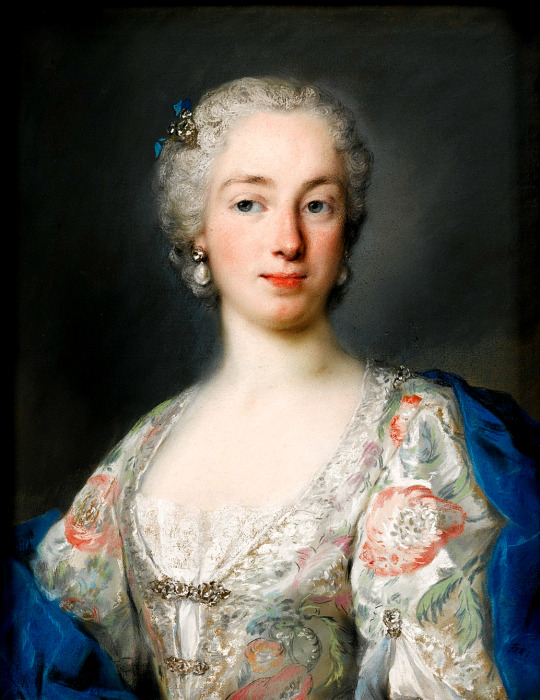

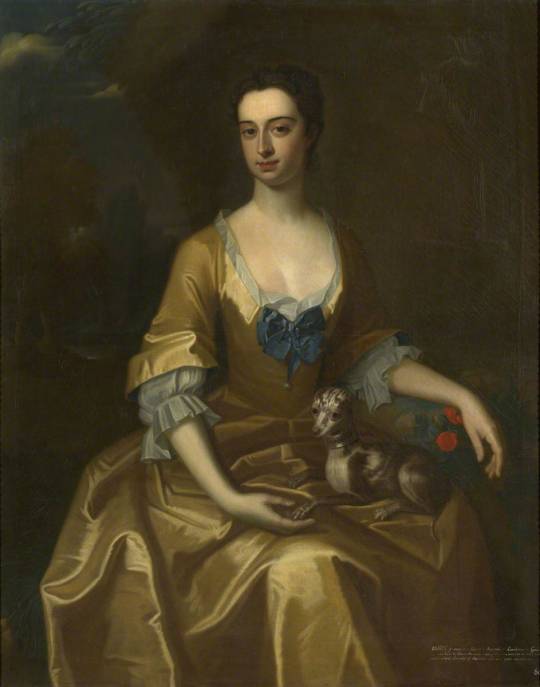


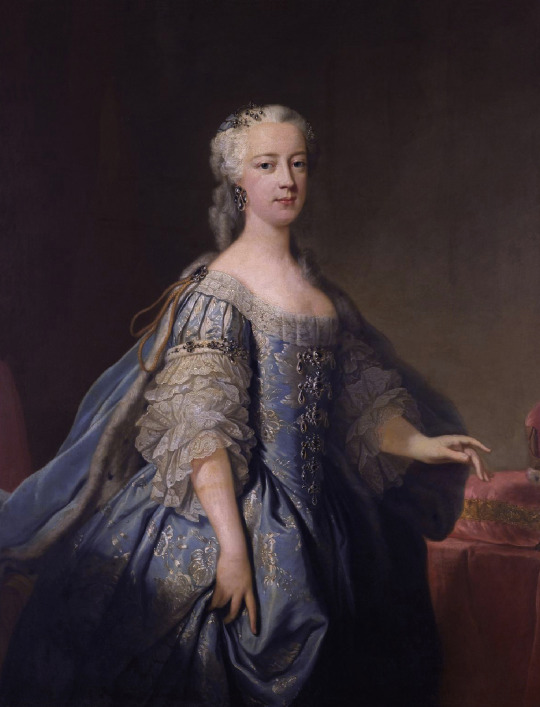

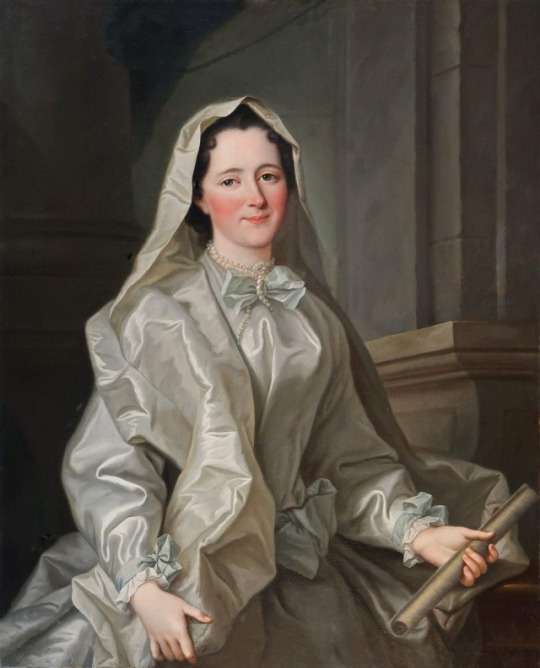
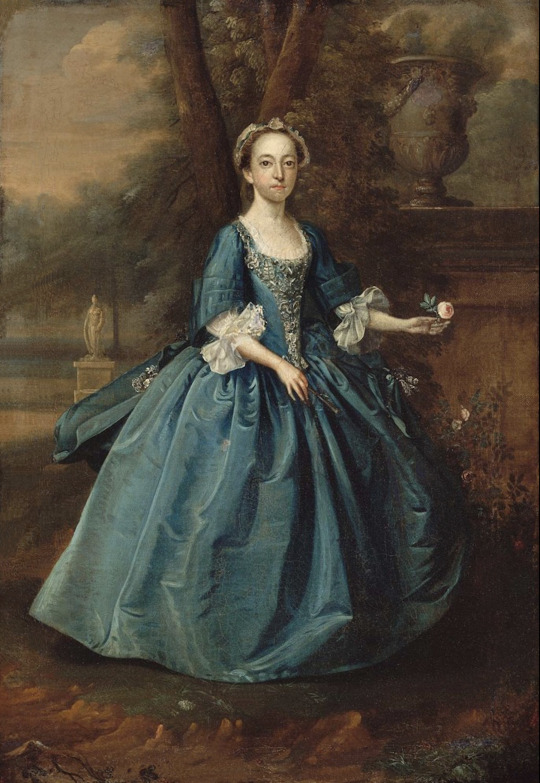
1730s Close out, for a while (from top to bottom) -
ca. 1735 Elisabetta Algarotti Dandolo by Rosalba Carriera (location ?). From pinterest.com/source/karoline-von-manderscheid.tumblr.com/ 1034X1341.
ca. 1735 Probably Maria Clementina Sobieska by Pier Leone (Muzeum Pałacu Króla Jana III w Wilanowie - Warszawa, Poland). From Google Art Project via Wikimedia; fixed spots w Pshop 2251X3000.
ca. 1735/1740 Lady Mary Bellings-Arundell, Baroness Arundell of Wardour (1716–1769) by Enoch Seeman the Younger (Oxburgh Hall - Oxburgh, near Swffham, Norfolk, UK). From Wikimedia 943X1200.
ca. 1737 Maria Josepha of Austria by Louis de Silvestre (Stadtgeschichtliches Museum - Leipzig, Sachsen, Germany) From Google Art Project via liveinternet.ru/users/marylai/post292168318/ 2345X300.
ca. 1738 Princess Amellia of Great Britain by Jean Baptiste van Loo (auctioned by Sotheby's). Probably from Wikimedia; fixed spots & cracks w Pshop 1308X1713.
ca. 1739 Elisabeth Christine von Braunschweig-Bevern by Antoine Pesne (Stiftung Preußische Schlösser und Gärten - specific location ?). From Wikimedia; fixed spots w Pshop 2431X3322.
ca. 1739 Lady by Herman van der Mijn (location ?). From tumblr.com/jeannepompadour 642X792.
ca. 1739-1740 Woman Standing in a Garden by Arthur Devis (location ?). From history-of-fashion.tumblr.com/post/123799742529/ab-1739-1740-arthur-devis-portrait-of-a-woman via pinterest.com/amisiak1193/stroje-damskie-1700-1800/; fit to screen 1980X2870.
#1730s fashion#Rococo fashion#Georgian fashion#Louis XV fashion#Elisabetta Algarotti Dandolo#Rosalba Carriera#laced bodice#modesty piece#Maria Clementina Sobieska#Pier Leone#hair jewelry#robes#Mary Bellings-Arundell#Enoch Seeman the Younger#flared under-sleeves#flared cuffs#Maria Josepha of Austria#Louis de Silvestre#collar#Princess Amellia#Jean Baptiste van Loo#scoop neckline#lace bertha#ruffled sleeves#Elisabeth Christine von Braunschweig-Bevern#Antoine Pesne#jewel choker#Herman van der Mijn#high neckline#Arthur Devis
40 notes
·
View notes
Text
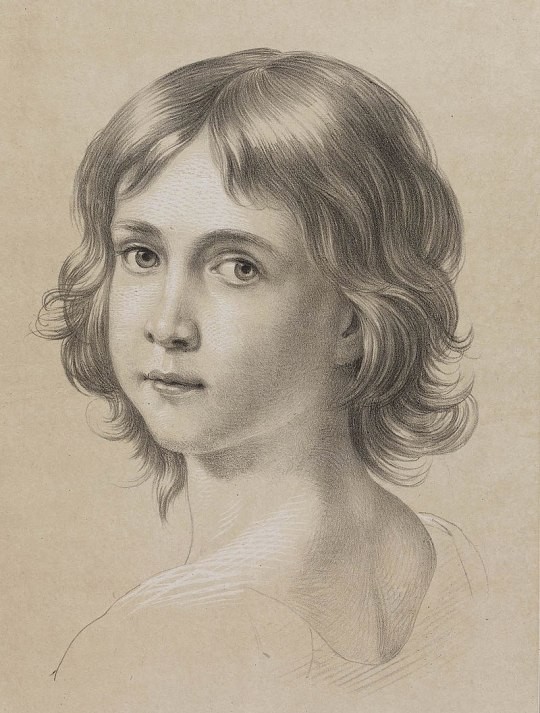

The only son of King Max I with his second wife Karoline, Max Joseph Karl Friedrich (1800-1803), did not survive infancy. Therefore, all hopes were placed in the further pregnancies of the wife. The twins in 1801 (Amalie and Elise) were still accepted with some joy. But the birth in 1805 - again female twins - caused consternation. King Max did not take it too tragically; he wrote to his brother-in-law after the birth: "After all, admit that it is praiseworthy to have a brother-in-law who produces twins twice in a row. It is the necessary consequence of having steadfastly led a well-behaved, regulated life."
But Auguste, a daughter from Max's first marriage, saw the situation quite differently: "Yesterday dear Mama came down with two girls. We are all saddened, although dear Mama is in as good a condition as one could wish for. We wanted two sons or one... I have just seen her. She looks well, but she is also sorry that she does not have a son".
Haslinger, Ingrid (2016). Erzherzogin Sophie: Eine Biografie nach den persönlichen Aufzeichnungen der Mutter Kaiser Franz Josephs (Translation done by DeepL. Please keep in mind that in a machine translation a lot of nuance may/will be lost)
ON THIS DAY, IN 1805, PRINCESSES SOPHIE AND MARIA ANNA OF BAVARIA, LATER ARCHDUCHESS OF AUSTRIA AND QUEEN OF SAXONY RESPECTIVELY, WERE BORN. The twin girls were the third and fourth daughter of King Maximilian I of Bavaria and his second wife Caroline of Baden. Sophie married Archduke Franz Karl of Austria in 1824, and they had six children, among them Emperor Franz Josef I of Austria and Emperor Maximilian I of Mexico. Maria Anna, known as Marie, married the Crown Prince of Saxony, later King Friedrich August II, in 1833; they had no children. Sophie and Marie remained close for the rest of their lives, writing and visiting each other often.
#sophie of bavaria archduchess of austria#queen maria anna of saxony#queen caroline of bavaria#maximilian i of bavaria#auguste of bavaria duchess of leuchtenberg#on this day in history#house of wittelsbach#historicwomendaily#Erzherzogin Sophie: Eine Biografie nach den persönlichen Aufzeichnungen der Mutter Kaiser Franz Josephs
49 notes
·
View notes
Text

Archduchess Karoline Marie of Austria (1869-1945), late 1870s.
She was a first cousin of Archduke Franz Ferdinand of Austria and Princess Consort Marie Louise of Bulgaria.
24 notes
·
View notes
Text
Holidays 8.5
Holidays
Bogotá's Carnival begins (Colombia)
Damn the Torpedoes, Full Speed Ahead Day
Fiesta de San Salvador (El Salvador)
Genes For Jeans Day (Australia)
Homeland Thanksgiving Day (Croatia)
International Traffic Light Day
National Blackmail Day
National Failures Day
National Underwear Day
National Youth and Children’s Day (Kiribati)
Nuestra Señora de África (Ceuta, Spain)
Return of the Queen (Johnny English)
Tutti Frutti Hat Day
Umuganura (Harvest Thanksgiving; Rwanda)
Victory Day (Croatia)
Work Like a Dog Day
Food & Drink Celebrations
805 Day
Green Peppers Day
National Couscous Day
National Waffle Day
Oyster Day
First Friday in August
Braham Pie Day (Minnesota) [1st Friday]
International Beer Day [1st Friday]
International Mustache Day [1st Friday]
Moxee Hop Festival begins (Washington) [1st Friday]
National Water Balloon Day [1st Friday]
Tomboy Tools Day [1st Friday]
Twins Day Festival begins (Twinsburg, Ohio) [1st Full Weekend, begins 1st Friday]
Independence Days
Burkina Faso (from France, 1960)
Feast Days
Abel of Reims (Christian; Saint)
Addai (Christian; Saint)
Afra (Christian; Saint)
Albrecht Dürer, Matthias Grünewald, and Lucas Cranach the Elder (Episcopal Church (USA))
Cassian of Autun (Christian; Saint)
Clipping the Church Day (Yorkshire, UK)
Dedication of the Basilica of St Mary Major (Catholic Church)
Enola Gay Day (Church of the SubGenius; Saint)
Emygdius (Christian; Saint)
Lucretia Borgia Day (Church of the SubGenius; Saint)
Memnius (a.k.a. Menge; Christian; Saint)
Oswald of Northumbria (Christian; Saint)
Putanesca Sauce Day (Pastafarian)
Sacrifice to Salus (Ancient Roman Goddess of Health)
Tango (Muppetism)
Tasso (Positivist; Saint)
Lucky & Unlucky Days
Tomobiki (友引 Japan) [Good luck all day, except at noon.]
Uncyclopedia Bad to Be Born Today (because the yellow car was invented.)
Premieres
Crimes of Passion, by Pat Benatar (Album; 1980)
Luck (Animated Film; 2022)
The Piper at the Gates of Dawn, by Pink Floyd (Album; 1967)
Punch the Clock, by Elvis Costello (Album; 1983)
Revolver, by The Beatles (Album; 1966)
Rise of the Planet of the Apes (Film; 2011)
Risky Business (Film; 1983)
Running Up That Hill, by Kate Bush (Song; 1985)
Shout, by The Isley Brothers recorded (Song; 1959)
Suicide Squad (Film; 2016)
To Catch a Thief (Film; 1955)
Today’s Name Days
Dominika, Oswald (Austria)
Marija, Nives, Osvald, Snježana (Croatia)
Kristián (Czech Republic)
Osvaldus (Denmark)
Salme, Salmi (Estonia)
Salme, Sanelma (Finland)
Abel (France)
Maria, Oswald (Germany)
Nona, Nonna (Greece)
Krisztina (Hungary)
Osvaldo, Vincenzo (Italy)
Arvils, Osvalda, Osvalds (Latvia)
Mintarė, Nona, Osvaldas, Rimtas (Lithuania)
Oskar, Osvald (Norway)
Cyriak, Emil, Karolin, Maria, Nonna, Oswald, Oswalda, Stanisława (Poland)
Hortenzia (Slovakia)
África, Nieves (Spain)
Alrik, Ulrik (Sweden)
Aphra, Areta, Aretha, Naomi, Neomi, Noami, Noemi (USA)
Today is Also…
Day of Year: Day 217 of 2022; 148 days remaining in the year
ISO: Day 5 of week 31 of 2022
Celtic Tree Calendar: Tinne (Holly) [Day 28 of 28]
Chinese: Month 7 (Lányuè), Day 8 (Geng-Yin)
Chinese Year of the: Tiger (until January 22, 2023)
Hebrew: 8 Av 5782
Islamic: 7 Muharram 1444
J Cal: 7 Hasa; Sixday [7 of 30]
Julian: 23 July 2022
Moon: 50% 1st Quarter
Positivist: 21 Dante (8th Month) [Tasso]
Runic Half Month: Thorn (Defense) [Day 10 of 15]
Season: Summer (Day 46 of 90)
Zodiac: Leo (Day 14 of 31)
2 notes
·
View notes
Photo
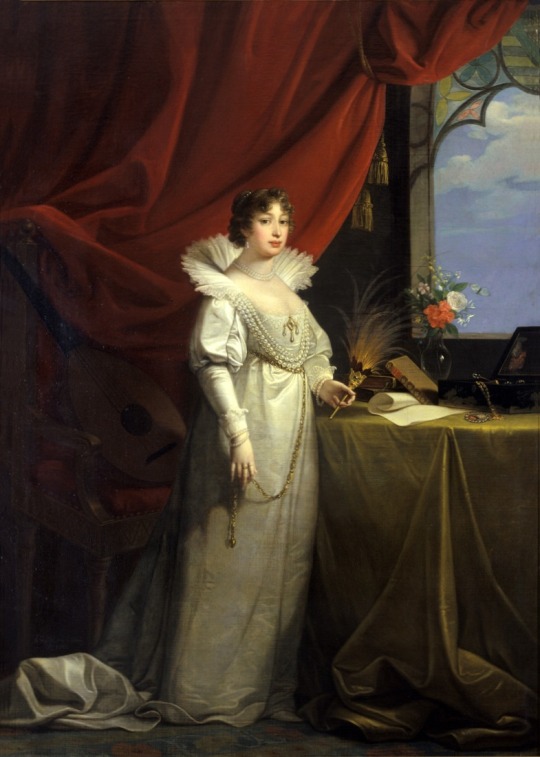
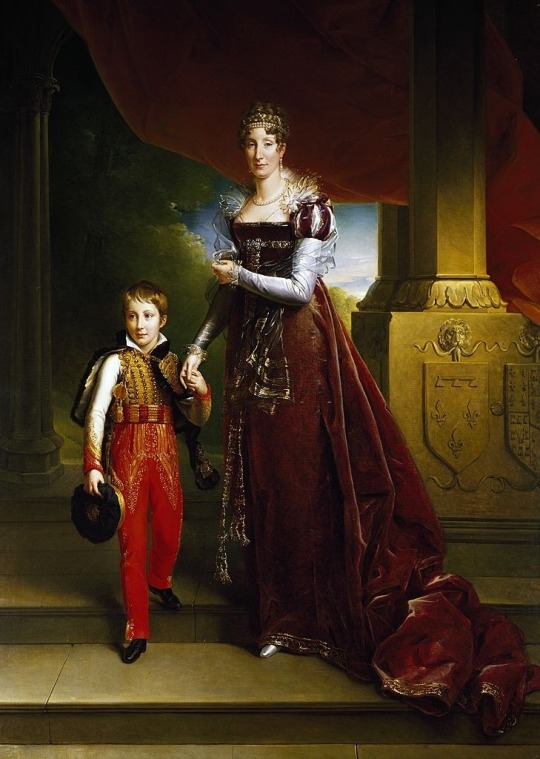
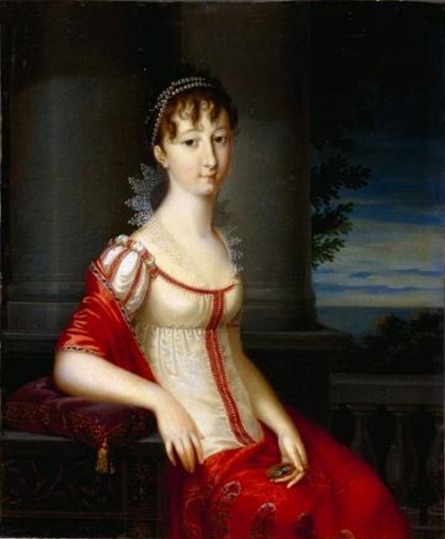
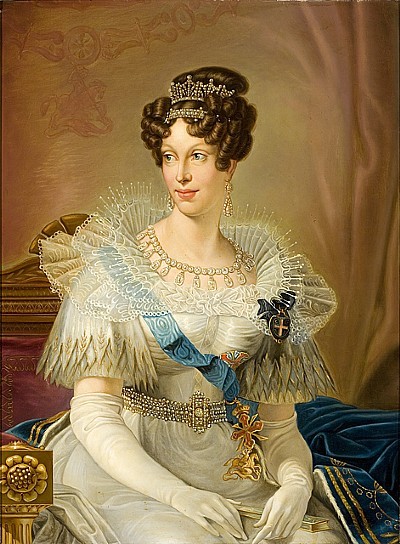
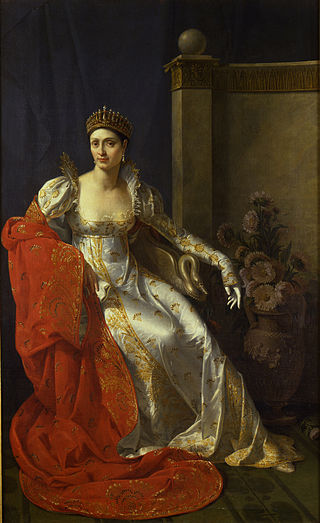
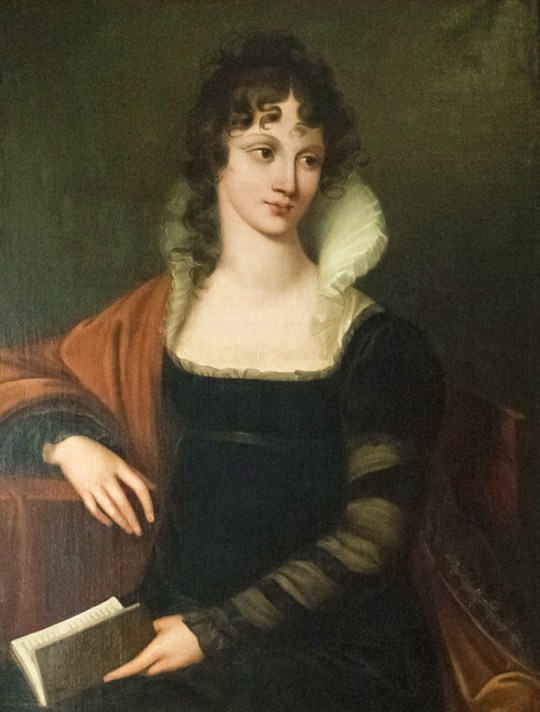
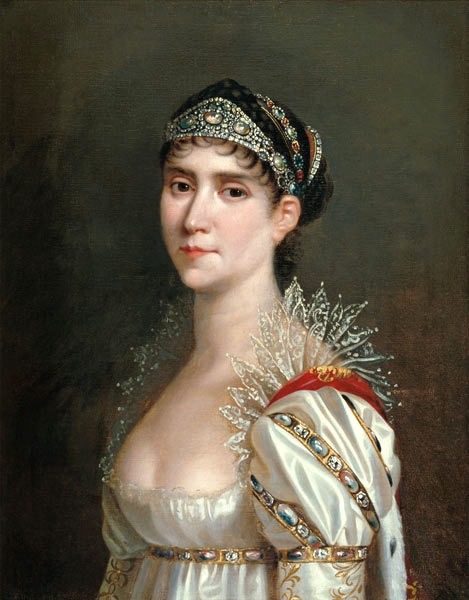
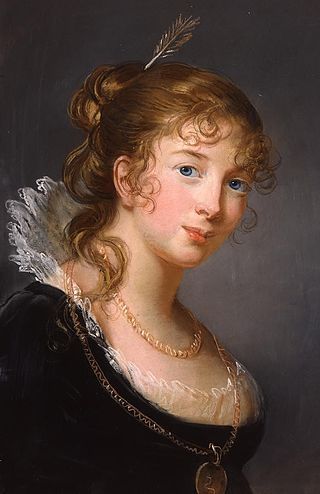
Cherusque collars
1. Karoline Amalie of Hesse-Kassel 2. Maria Amalia of Naples and Sicily (1782-1866) with her son, the Duke of Chartres 3. Maria Ludovika of Modena--Hofburg, Präsidentschaftskanzlei 4. Maria Luigia of Austria, duchess of Parma 5. Marie Guilhelmine Benoist 6. N. Orlova Davydova 7. Empress Josephine by Robert Lefevre 8. Louise of Prussia by Elisabeth Vigee-Lebrun, 1801
#fashion#cherusque#empire#empire fashion#regency#regency fashion#19th century#19th century fashion#court dress#court fashion
177 notes
·
View notes
Photo
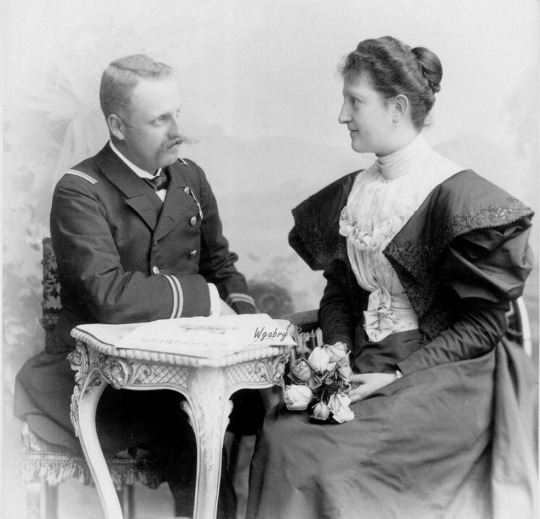
1894 the newly weds Prince August Leopold of Saxe-Coburg and Gotha (the second of four sons born to German Prince Ludwig August of Saxe-Coburg and Gotha and Princess Leopoldina of Brazil) and Archduchess Karoline Marie of Austria (the fourth child and second eldest daughter of Archduke Karl Salvator of Austria and his wife Princess Maria Immaculata of Bourbon-Two Sicilies).
13 notes
·
View notes
Text

Archduchess Marie Karoline of Austria (1825-1915), by Robert Theer.
#robert theer#maria carolina of austria#erzherzogin#erzherzogtum österreich#austria teschen#house of habsburg lorraine
6 notes
·
View notes
Photo

An aerial view of the Maria Theresa Vault inside the Imperial Crypt in Vienna, where 16 people are buried.
In the middle is the double tomb of Maria Theresa and Francis I.
Along the left side are the tombs of three of their children. From bottom to top are: Archduke Charles Joseph, Archduchess Maria Johanna Gabriela, and Archduchess Maria Josepha.
The small tomb in the top left corner belongs to the stillborn daughter of Maria Theresa’s sister.
Along the back wall are, left to right: Archduchess Maria Elisabeth (daughter of Maria Theresa and Francis I), Maria Josepha of Bavaria (Second wife of Joseph II), Isabella of Parma (First wife of Joseph II, below her tomb is that of her daughter, Maria Christina, who died shortly after birth, Maria Theresa of Austria (Daughter of Joseph II and Isabella), and Maria Carolina of Austria (Daughter of Maria Theresa and Francis I).
In the top right corner is the tomb of Maria Christina Theresa of Saxony, the daughter of Maria Christina of Austria, who only lived for a day.
Not visible in the photo, behind the person standing in front of the tomb of Maria Theresa and Francis, is the tomb of their eldest son, Joseph II.
Also not visible, but in an alcove to the side of Joseph’s tomb is the tomb of Marie Karoline von Fuchs-Mollard. The much loved Governess of Maria Theresa, she is the only non Habsburg buried in the crypt.
#imperial crypt#maria theresa#joseph ii#francis i#maria josepha of austria#Maria Johanna Gabriela of Austria#archduke charles joseph#maria elisabeth of austria#maria carolina of austria#maria theresa of austria#maria josepha of bavaria#isabella of parma#maria christina of austria#Maria Christina Theresa of Saxony#Marie Karoline von Fuchs-Mollard#THIS TOOK SO DAMN LONG#it's amazing how many people are packed into such a small space
145 notes
·
View notes
Photo



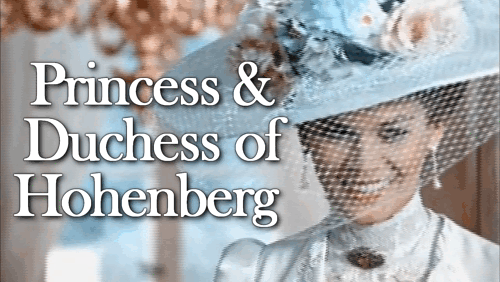

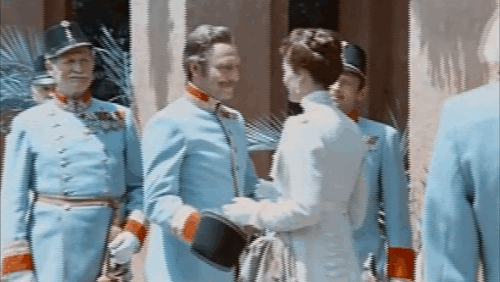


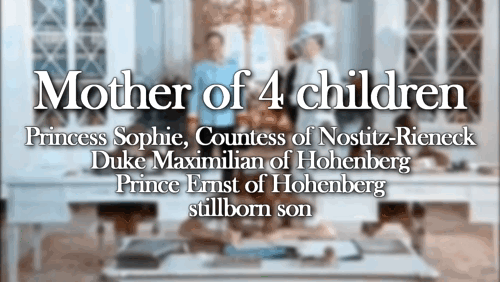
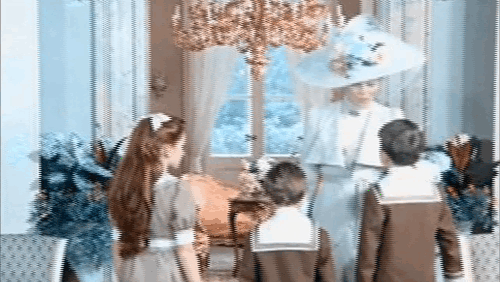
House of Chotek & of Habsburg: Countess Sophie Chotek of Chotkowa and Wognin
Sophie was born as the fifth child of Count Bohuslav Chotek of Chotkow and Wognin and his wife Countess Wilhelmine Kinsky of Wchinitz and Tettau. Her siblings were Count Wolfgang Chotek, Countess Zdenka Chotek, Princess Marie of Thun and Hohenstein, Countesses Karoline and Henriette of Nostitz-Rieneck, Countess Oktavia of Schönburg-Glachau and Countess Antoinette Wuthenau-Hohenthurm.
Sophie grew up in Dresden where her father had worked as diplomat. She had received an education and led the household of her father after her mother had died. When she fell for her future husband Archduke Franz Ferdinand, most of her sisters were already married and one of them even served Crown Princess Stéphanie of Austria-Hungary as a lady-in-waiting. When exactly the couple actually met for the first time is debated to this day. The time frame is somewhen between 1894 and 1897. However this may be, they were able to spent a few days icognito at Bad Neuenahr in 1898 with the help of a former lady-in-waiting of Franz Ferdinand’s aunt Empress Elisabeth.
The relationship only became public in 1899. The year before, Sophie had made clear she wanted to live closer to her lover, since she was still living with her father in Dresden. But Franz Ferdinand wanted to avoid the Viennese gossip and suggested she should apply as a lady-in-waiting to Archduchess Isabella, The Duchess of Teschen, who lived with her family in Bratislava. Isabella was supposedly a difficult mistress to please, so Sophie was reluctant but eventually did apply and received the post. From now on, Franz Ferdinand accepted every invitation of Archduke Friedrich’s family and visited them twice or thrice a week. Isabella hoped he was interested in her eldest daughter Archduchess Maria Christina of Austria-Teschen. One day, Isabella discovered a locket that Franz Ferdinand had dropped on the tennis court and opened it. She had expected to find a picture of her daughter in it but instead she found one of Sophie inside.
As soon as the relationship became public, the court tried to separate the couple. Sophie was not of high enough rank for a member of the House of Habsburg’s main line and heir to the throne, although her family had been nobles since the middle ages. Only when Franz Ferdinand’s stepmother Infanta Maria Theresa of Portugal spoke to Emperor Franz Joseph, the couple received permission to marry morganatically on April 8th, 1900, which they did less than three months later on July 1st. The condition was that Franz Ferdinand signed a document which effectively removed his future children from the line of succession and prevented him from crowning, in case of a succession to the throne, Sophie Empress of Austria, Queen of Hungary, Bohemia, Croatia or any other Habsburg realm or even making her an archduchess. This was especially important since Hungary did not practise the concept of morganatical marriages but instead viewed all marriages as equal. For her wedding, Sophie received the title of Fürstin (Princess) of Hohenberg and the style of Serene Highness. Nevertheless, Sophie was treated as a second-class noble by the Viennese society. The only one she was closed with in the Imperial family was Crown Prince Rudolf’s widow Princess Stéphanie of Belgium.
Only in 1909, after the birth of all of her children, she received the elevation to Duchess and the style of a Highness. She received many congratulation letters for it, one of them came form the German Emperor Wilhelm II who was a friend of her husband. But while her husband ranked only below The Emperor as his heir, she ranked behind all the archduchesses as well as the mediatized princesses and countess of Austria and Hungary. This difference in rank kept some courts from hosting the couple as it was difficult to do so without making any mistakes. But this did not keep the Romanian King Karl I. and his wife Elisabeth of Wied in 1909 and the British King George V and his wife Mary of Teck in 1913 from hosting them.
A little more than half a year after their visit to Britain, Sophie and Franz Ferdinand were dead. They were assassinated in Sarajevo. While he was shot in the neck, a bullet hit her in the abdomen. Their last recorded conversation was her asking him what had happened to him and him begging her to stay alive for the children while calling her by her nickname Sopherl. The murder of Sophie and Franz Ferdinand is regarded as the spark that set World War I in motion. Even in death, protocol took presedence. Franz Ferdinand had the right to be buried in the Imperial Crypt but Sophie did not. Instead they had requested to be buried together at the Habsburg’s summer home of Arstetten castle.
Their children Sophie, Maximilian and Ernst were raised by Sophie’s sister Henriette while their legal guardian became their uncle and good friend of their father Prince Jaroslav of Thun and Hohenstein. Sophie and Maximilian decided to forgive Nedeljko Čabrinović for the murder of their parents after her showed regret for doing it while Ernst did not sign the letter they wrote to him. Ernst and Maximilian were later imprisoned in a concentration camp in Dachau for making anti-Nazi statements after the Annextion of Austria by The Third Reich. But they survived their imprisonment. Through her daughter Sophie is an ancestor of the actors Friedrich and Max von Thun. The latter actually played Franz Ferdinand’s cousin Crown Prince Rudolf in a miniseries in 2006.
// Florinda Bolkan in The Day That Shook the World (1975)
______________________________________________________________
Requested by anonymous
#perioddramaedit#women in history#historyedit#Sophie Chotek#European history#Austrian history#Bohemian history#House of Habsburg#House of Habsburg-Lorraine#House of Chotek#sophie chotek von chotkowa#Sophie Chotek of Chotkowa and Wognin#1900s#20th century#1800s#1890s#19th century#morganatic wives#Duchess Sophie of Hohenberg#period drama#The Day That Shook The World#requests#historic women
181 notes
·
View notes
Text
King Pedro V’s 5th sibling: Infanta Maria Ana de Portugal

Born: 21st August 1843 Necessidades Palace, Lisbon, Portugal Died: 5th February 1884 (aged 40) Dresden, Saxony
Infanta Maria Ana of Portugal (Maria Ana Fernanda Leopoldina Micaela Rafaela Gabriela Carlota Antónia Júlia Vitória Praxedes Francisca de Assis Gonzaga) (21st August 1843 – 5th February 1884) was a Portuguese infanta (princess), the eldest surviving daughter of Queen Maria II of Portugal and her King consort Fernando II of Portugal, a member of the House of Bragança.
After her mother's death in 1853, when Maria Ana was just ten years old, she became the leading lady of the court, until her older brother, King Pedro V of Portugal, married Princess Stephanie of Hohenzollern-Sigmaringen,

in 1858. Although in the early stages of their acquaintance the two sisters-in-law had a good relationship, in a letter written in 1859 to Prince Albert of Saxe-Coburg and Gotha,

when Stephanie was already dead, King Pedro mentions that his sister made unflattering comments regarding his wife "because of her feminine vanity caused by a lower status (...)"
The relationship between the sisters-in-law seems to have had its ups and downs since Stephanie's arrival in May 1858 and Maria Ana's wedding in May 1859. The Queen wrote about her sister-in-law: "She is, in every respect, the one who is more like Pedro (...)", "She is a charming person, good, generous, remarkably sensible for her age, with no trace of selfishness, respected and loved by all of us (...) George of Saxony has discovered a true gem. She is happy and loves him, but she cannot talk about the moment in which she will leave her family without crying. What is certain is that she will leave a terrible emptiness behind". Maria Ana's brother, Pedro, also claims during this time that his sister is "the pearl of our family circle", in a letter to Prince Albert.
She married in Lisbon at the Belém Palace on 11th May 1859 Prince George of Saxony (1832–1904),

second son of King John I of Saxony,

a kinsman from the Catholic Albertine branch of her father's Wettin dynasty. Queen Stephanie tried to organize a brilliant ceremony, but, in the end, the wedding was quiet and went unnoticed in both Portugal and Saxony. The newly-weds spent their first days as a married couple at Belém Palace. During their short stay in Portugal after the ceremony, Prince George left a poor impression with the Portuguese Royal Family, as he "barely talked to the bride" and did not attend a theater performance to which he had been invited. During that same performance, 15-year-old Maria Ana was seen crying. The couple left to Saxony on May 14th. Maria Ana was not allowed to take Portuguese ladies-in-waiting with her and was only accompanied by her brother Luís
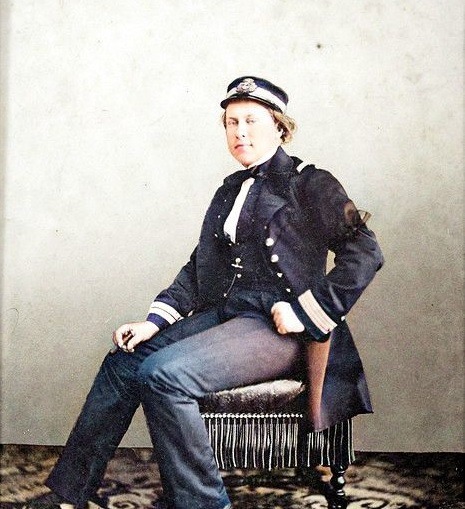
in the journey. Pedro V wrote the following regarding the wedding: "the wedding of my sister to Prince George of Saxony was celebrated with more pomp than happiness. The former is followed by a regretful fate, as he left no sympathies and people who met him often left with a poor impression."
The marriage was not a happy one, according to Historian Eduardo Nobre who claims that the Prince "did not live up to the expectations and qualities of the Portuguese Infanta". Despite their issues, they had eight children.
Although she renounced her claims to the Portuguese throne when she married, Maria Ana could still become Queen if the male line became extinct. This situation nearly happened in 1861, when King Pedro V and two of her other brothers died from Typhoid Fever and left no children. However, this hypothesis was completely put aside when her brother, King Luís I, married Princess Maria Pia of Savoy
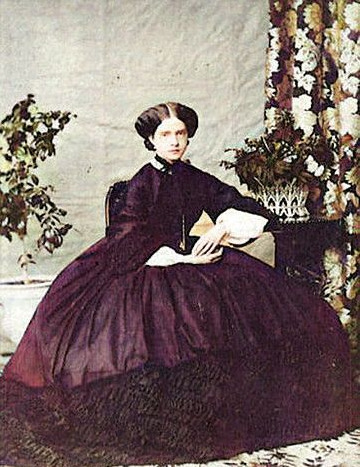
and had two sons, the future King Carlos I
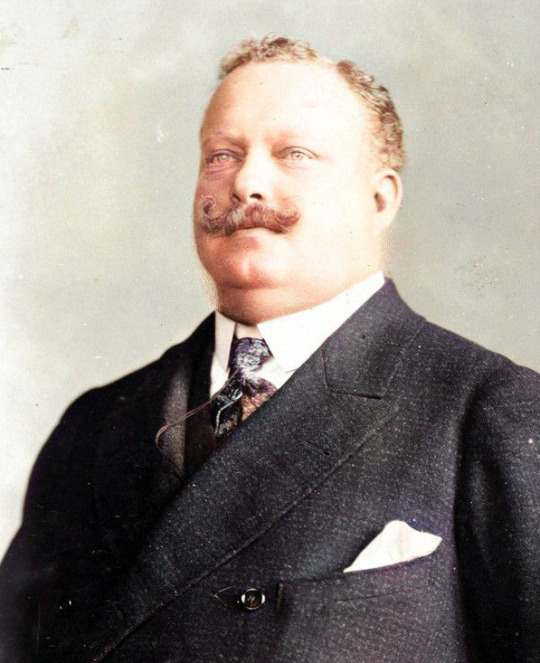
and Infante Afonso.
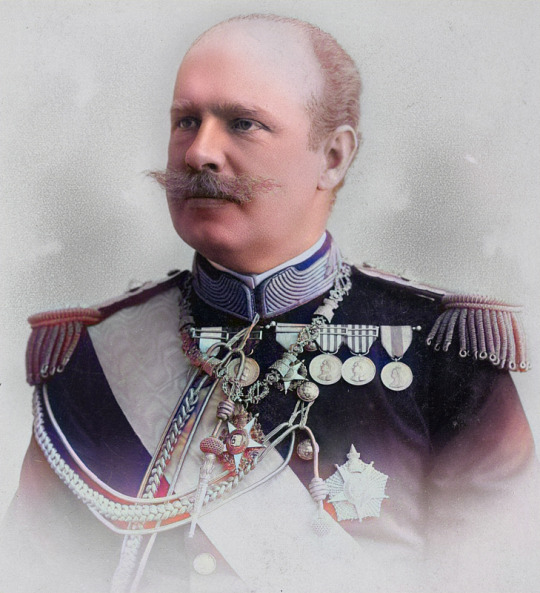
Despite everything, it's not likely that Maria Ana ever gave this hypothesis great importance because of her troubled marriage and many children.
Around 1883, her youngest son, Prince Albert of Saxony,

became seriously ill. Maria Ana took care of him for several months until he recovered. This effort would be fatal, as the Infanta died from exhaustion, on 5th February 1884, before her husband became King. Her husband would remain unmarried for the rest of his life.
In Portugal, her second brother Luís I soon succeeded her eldest brother Peter V as king.
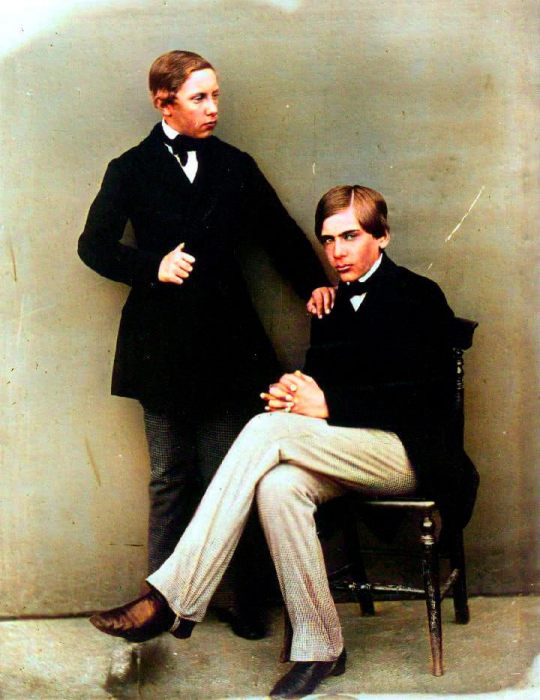
Her husband's elder brother Albert
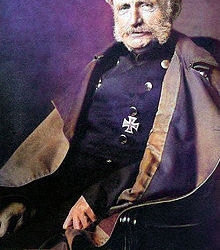
succeeded her father-in-law as King of Saxony and gradually it became clear that he and his wife Carola of Vasa
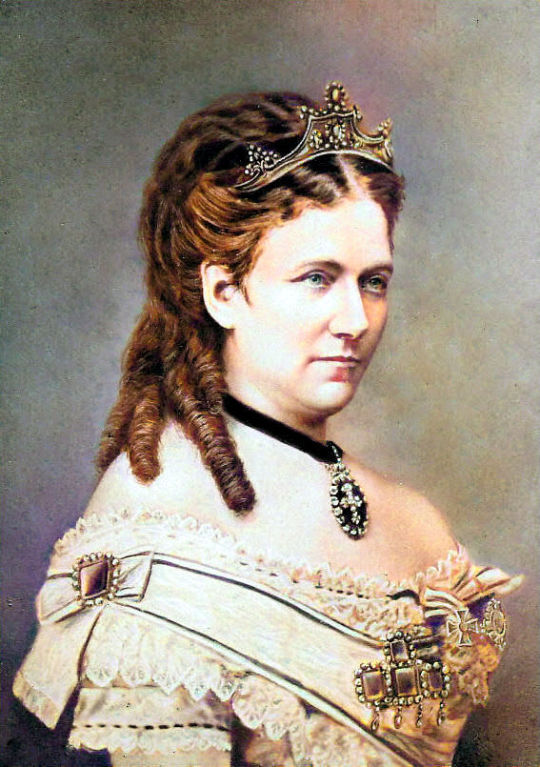
were not able to have children of their own. Maria Ana's eldest son would almost certain to one day succeed to the throne.
Marie Johanna Amalie Ferdinande Antonie Luise Juliane, (19th June 1860 - 2nd March 1861), died in childhood, no issue
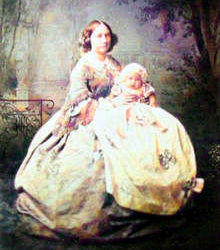
Elisabeth Albertine Karoline Sidonie Ferdinande Leopoldine Antonie Auguste Clementine (14th February 1862 - 18th May 1863) died in childhood, no issue
Mathilde Marie Auguste Viktorie Leopoldine Karoline Luise Franziska Josepha (19th March 1863 - 27th March 1933) died unmarried, no issue
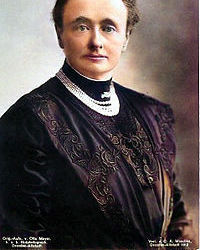
Frederick Augustus Johann Ludwig Karl Gustav Gregor Philipp (25th May 1865 - 18th February 1932)
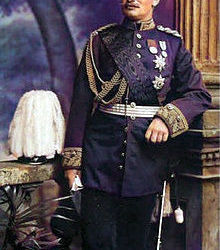
married Princess Louise of Tuscany (1870–1947),
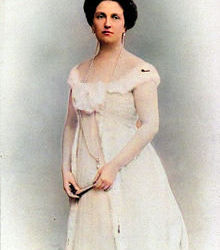
later divorced, had issue
Maria Josepha Luise Philippine Elisabeth Pia Angelica Margarethe (31st May 1867 - 28th May 1944)

married to her cousin second degrees Archduke Otto Franz of Austria (1865–1906),
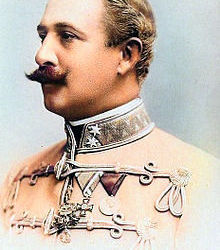
had issue
Johann Georg Pius Karl Leopold Maria Januarius Anacletus (10th July 1869 - 24th November 1938) married first Duchess Maria Isabella of Württemberg (1871–1904) and second Princess Maria Immaculata of Bourbon-Two Sicilies (1874–1906)

Maximilian Wilhelm August Albert Karl Gregor Odo (17th November 1870 - 12th January 1951) ordained as a priest, died unmarried, no issue
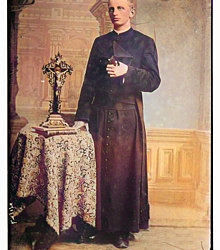
Albert Karl Anton Ludwig Wilhelm Viktor (25th February 1875 - 16 September 1900) died unmarried, no issue.

Princess Maria Ana predeceased her father Fernando, her husband George, and her brother-in-law King Albert of Saxony. In 1902 George succeeded his childless brother as king, and on his death in 1904 Maria Ana's eldest son became King of Saxony as Frederick Augustus III.
#infanta maria ana de bragança#house of bragança#queen maria ii of portugal#king consort fernando ii#king pedro v of portugal
13 notes
·
View notes
Text
[Series] Maria Theresia (2017) | Part 02 (Season 01, Episode 02) | with English subtitles

Download the subtitle file | Donate via Paypal
Maria Theresia is an Austrian-Czech-Slovak-Hungarian co-production about the female monarch of the same name. Season 01 follows her journey from a young woman fighting to marry the man of her dreams to becoming the ruling Archduchess of Austria in a Europe that joined forces against her rule. The first episode depicts Maria Theresia’s life before becoming the ruler of the Habsburg dominions.
Episode 2
>>>Watch the episode on WLEXT.is<<<
Cast
Marie-Luise Stockinger as Maria Theresia
Vojtěch Kotek as Franz Stephan of Lorraine
Fritz Karl as Emperor Charles VI
Zuzana Stivínová as Empress Elisabeth Christine
Anna Posch as Maria Anna
Karl Markovics as Eugen of Savoy
Julia Stemberger as Marie Karoline "Füchsin/Vixen" von Fuchs-Mollard
Cornelius Obonya as Doctor Spannagel
Zuzana Mauréry as Mademoiselle de Chartres
Alexander Bárta as Count Philipp Kinsky
Bálint Adorjáni as Nikolaus Esterházy
Note: This is a revised version of my first upload in April 2018. If you have watched episode 02 already, it is not really necessary to watch this new version again. I can no longer upload it to youtube because the production company immediately claims and blocks it worldwide.
#period drama#historical drama#Maria Theresia (2017)#Maria Theresia#Marie Terezie#Mária Terézia#Maria Theresa#English subtitles
2 notes
·
View notes
Photo

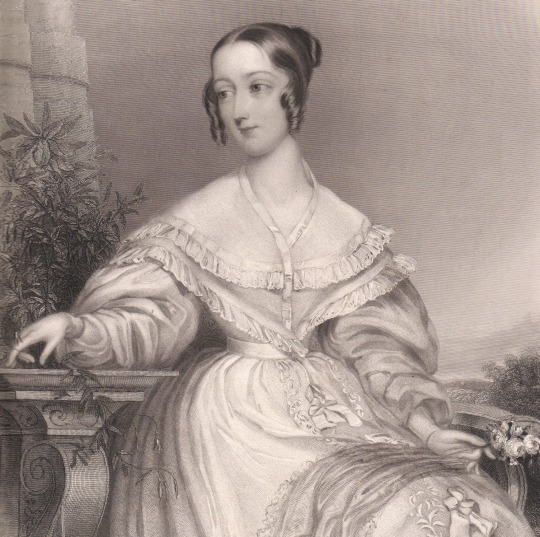
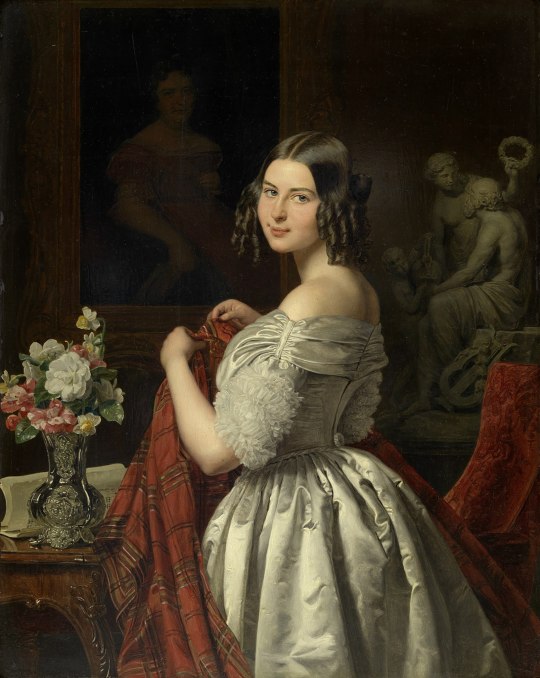
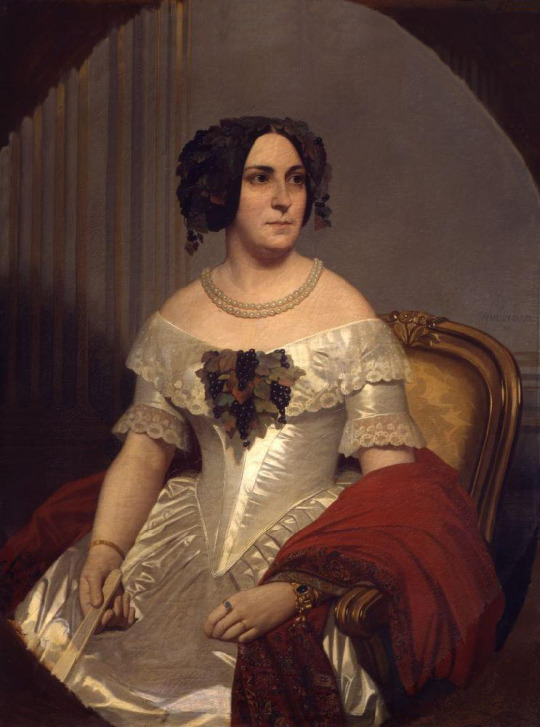


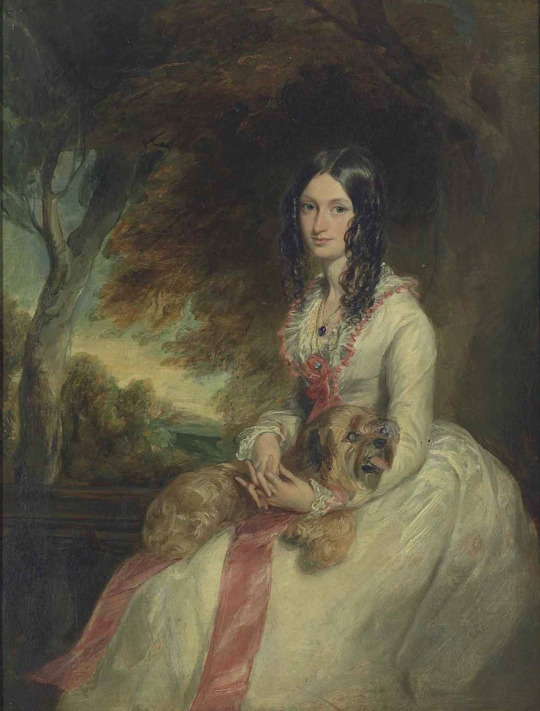
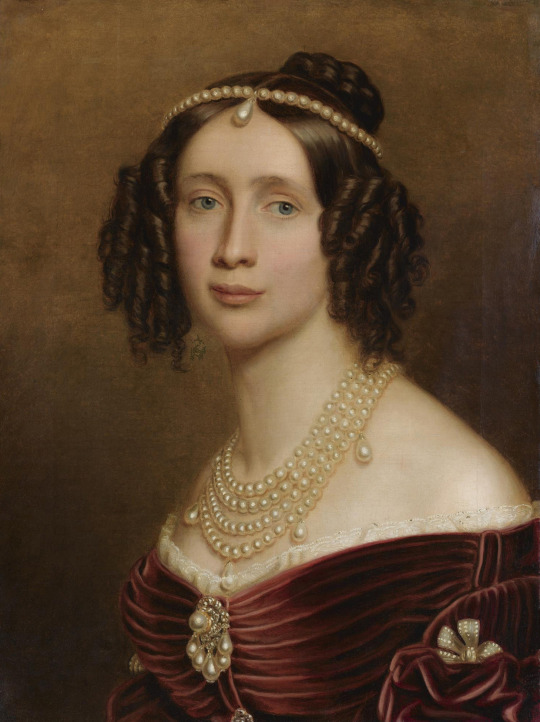
Pre-crinoline Victorian dresses (from top to bottom) -
1837 Maria Louise Alexandrine von Preußen geb. Prinzessin von Sachsen-Weimar-Eisenach by Carl Joseph Begas (Klassik Stiftung Weimar, specific location ?). From Wikimedia 1311X1542.
ca. 1840 Lady Flora Hastings possibly by Edward Finden after E. Hawkins; portrait from the book Hastings of Hastings. From Wikimedia, attributions from British Museum Web site 2275X2263.
1840 Junge Dame bei der Toilette by Ferdinand Georg Waldmüller (Wien Museum or Museen der Stadt Wien, specific location ? - Wien, Austria). From Wikimedia 1632X2048.
1842 Marquise Louis-Frédéric Foucher de Circé, née Marie-Marguerite Burthe by Amaury Duval (Musée Sainte-Croix - Poitiers, Vienne, Nouvelle-Aquitaine, France). From Wikimedia; fixed spots, creases, & flaws w Pshop 743X1000.
Marie Karoline Austria Teschen by Robert Theer (auctioned by Christie's) From the lost gallery's photostream on flickr; fixed spots w Pshop 1884X2312.
Unknown woman by Sergey Zaryanko (Tyumen Regional Museum of Fine Arts - Tyumen, Tyumen Oblast, Russia). From theebonswan.blogspot.com/2018/12/portrait-of-unknown-woman-1840s-sergey.html?view=magazine 781X999.
Probably Lady Adelaide Emelina Caroline Vane by Sir Francis Grant (auctioned by Christie's). From their Web site 1196X1574.
1842 Maria Anna of Bavaria, Queen of Saxony by Joseph Karl Stieler (location ?) From the lost gallery; fixed spots & flaws w Pshop 1459X1951.
#1830s fashion#1840s fashion#early Victorian fashion#Romantic era fashion#Biedermeier fashion#Maria Louise Alexandrine von Preußen#Carl Joseph Begas#straight hair#side curl coiffure#modesty piece#pleated bertha#quarter-length sleeves#darts#full skirt#Flora Hastings#Edward Finden#E. Hawkins#bateau neckline#imbecile sleeves#natural waistline#waist band#Ferdinand Georg Waldmüller#ruffled sleeves#Marie-Marguerite Burthe#Amaury Duval#lace trim#V waistline#Marie Karoline Austria Teschen#Robert Theer#wavy hair
35 notes
·
View notes
Text
Holidays 8.5
Holidays
Bogotá's Carnival begins (Colombia)
Damn the Torpedoes, Full Speed Ahead Day
Fiesta de San Salvador (El Salvador)
Genes For Jeans Day (Australia)
Homeland Thanksgiving Day (Croatia)
International Traffic Light Day
National Blackmail Day
National Failures Day
National Underwear Day
National Youth and Children’s Day (Kiribati)
Nuestra Señora de África (Ceuta, Spain)
Return of the Queen (Johnny English)
Tutti Frutti Hat Day
Umuganura (Harvest Thanksgiving; Rwanda)
Victory Day (Croatia)
Work Like a Dog Day
Food & Drink Celebrations
805 Day
Green Peppers Day
National Couscous Day
National Waffle Day
Oyster Day
First Friday in August
Braham Pie Day (Minnesota) [1st Friday]
International Beer Day [1st Friday]
International Mustache Day [1st Friday]
Moxee Hop Festival begins (Washington) [1st Friday]
National Water Balloon Day [1st Friday]
Tomboy Tools Day [1st Friday]
Twins Day Festival begins (Twinsburg, Ohio) [1st Full Weekend, begins 1st Friday]
Independence Days
Burkina Faso (from France, 1960)
Feast Days
Abel of Reims (Christian; Saint)
Addai (Christian; Saint)
Afra (Christian; Saint)
Albrecht Dürer, Matthias Grünewald, and Lucas Cranach the Elder (Episcopal Church (USA))
Cassian of Autun (Christian; Saint)
Clipping the Church Day (Yorkshire, UK)
Dedication of the Basilica of St Mary Major (Catholic Church)
Enola Gay Day (Church of the SubGenius; Saint)
Emygdius (Christian; Saint)
Lucretia Borgia Day (Church of the SubGenius; Saint)
Memnius (a.k.a. Menge; Christian; Saint)
Oswald of Northumbria (Christian; Saint)
Putanesca Sauce Day (Pastafarian)
Sacrifice to Salus (Ancient Roman Goddess of Health)
Tango (Muppetism)
Tasso (Positivist; Saint)
Lucky & Unlucky Days
Tomobiki (友引 Japan) [Good luck all day, except at noon.]
Uncyclopedia Bad to Be Born Today (because the yellow car was invented.)
Premieres
Crimes of Passion, by Pat Benatar (Album; 1980)
Luck (Animated Film; 2022)
The Piper at the Gates of Dawn, by Pink Floyd (Album; 1967)
Punch the Clock, by Elvis Costello (Album; 1983)
Revolver, by The Beatles (Album; 1966)
Rise of the Planet of the Apes (Film; 2011)
Risky Business (Film; 1983)
Running Up That Hill, by Kate Bush (Song; 1985)
Shout, by The Isley Brothers recorded (Song; 1959)
Suicide Squad (Film; 2016)
To Catch a Thief (Film; 1955)
Today’s Name Days
Dominika, Oswald (Austria)
Marija, Nives, Osvald, Snježana (Croatia)
Kristián (Czech Republic)
Osvaldus (Denmark)
Salme, Salmi (Estonia)
Salme, Sanelma (Finland)
Abel (France)
Maria, Oswald (Germany)
Nona, Nonna (Greece)
Krisztina (Hungary)
Osvaldo, Vincenzo (Italy)
Arvils, Osvalda, Osvalds (Latvia)
Mintarė, Nona, Osvaldas, Rimtas (Lithuania)
Oskar, Osvald (Norway)
Cyriak, Emil, Karolin, Maria, Nonna, Oswald, Oswalda, Stanisława (Poland)
Hortenzia (Slovakia)
África, Nieves (Spain)
Alrik, Ulrik (Sweden)
Aphra, Areta, Aretha, Naomi, Neomi, Noami, Noemi (USA)
Today is Also…
Day of Year: Day 217 of 2022; 148 days remaining in the year
ISO: Day 5 of week 31 of 2022
Celtic Tree Calendar: Tinne (Holly) [Day 28 of 28]
Chinese: Month 7 (Lányuè), Day 8 (Geng-Yin)
Chinese Year of the: Tiger (until January 22, 2023)
Hebrew: 8 Av 5782
Islamic: 7 Muharram 1444
J Cal: 7 Hasa; Sixday [7 of 30]
Julian: 23 July 2022
Moon: 50% 1st Quarter
Positivist: 21 Dante (8th Month) [Tasso]
Runic Half Month: Thorn (Defense) [Day 10 of 15]
Season: Summer (Day 46 of 90)
Zodiac: Leo (Day 14 of 31)
0 notes
Text

Archduke Karl Salvator of Austria and family in 1880.
Back row: Archduchess Maria Theresa, Archduke Leopold Salvator, Archduke Karl Salvator and Archduke Franz Salvator.
Front row: Archduchess Maria Antoinette, Archduchess Maria Immaculata, Archduke Rainer Salvator, Archduchess Maria Immakulata, Archduchess Karoline Marie and Archduke Albrecht Salvator.
Archduke Franz Salvator later married Archduchess Marie Valerie, youngest daughter of Emperor Franz Joseph of Austria.
#archduke karl salvator of austria#archduchess maria immaculata of austria#archduchess maria theresa of austria#archduke franz salvator of austria#archduke leopold salvator of austria#archduchess karoline marie of austria#archduchess maria antoinette of austria#archduke albrecht salvator of austria#archduchess maria immakulata of austria#archduke rainer salvator of austria#austria#habsburg#tuscany#1880s#1880
15 notes
·
View notes
Text
Master Post - Members who married into a royal or noble house
Disclaimer: If a person married someone from the same house as they were born into, I have not listed them in this list. Please look at the list sorted by birth for them. Houses that rule(d)/reside(d) in other countries but originally came from German and/or Austrian territories and/or are generally regarded as belonging to this cultural room are listed among the German & Austrian Houses.
German & Austrian Houses
House of Babenberg
Princess Eudokia Laskarina of Nicaea, The Hereditary Duchess of Austria
Princess Theodora Angelina of Byzantium, The Duchess of Austria & Styria
Princess Theodora Komnene of Byzantium, The Duchess of Bavaria & Austria
House of Castell
Baroness Ottilie of Faber, Countess of Faber-Castell
House of Coburg (Cadet branch of the House of Wettin)
Princess Louise of Saxe-Gotha-Altenburg, The Duchess of Saxe-Coburg-Saalfeld (1st marriage)
Princess Mary of Teck, The Queen of the United Kingdom & British Dominions, The Empress of India
Queen Victoria of the United Kingdom (wife of Prince Albert of Saxe-Coburg and Gotha)
House of Faber
Ottilie Richter, Baroness of Faber
House of Habsburg (incl. Habsburg-Lorraine)
Anna Plochl, Countess of Meran
Princess Charlotte of Belgium, The Empress of Mexico, Archduchess of Austria
Infanta Eleanor of Portugal, Holy Roman Empress, The Archduchess of Austria
Eleonore Magdalene of Neuburg, Holy Roman Empress
Elisabeth in Bavaria, The Empress of Austria
Princess Elisabeth Christine of Brunswick-Wolfenbüttel, Holy Roman Empress
Queen Joanna of Castile, León and Aragon (Consort of Philip the Handsome, Archduke of Austria and The Duke of Burgundy)
Princess Maria Anna of Bavaria, The Archduchess of Inner Austria-Styria
Maria Beatrice d’Este, The Duchess of Massa & Carrara, Archduchess of Austria
Mary, The Duchess of Burgundy
Princess Sophie of Bavaria, Archduchess of Austria
Countess Sophie Chotek of Chotkowa and Wognin, The Duchess of Hohenberg
Princess Stéphanie of Belgium, The Crown Princess of Austria, Hungary and Bohemia
House of Hanover (Cadet branch of the House of Welf)
Princess Adelaide (Adelheid) of Saxe-Meiningen, The Queen of the United Kingdom and Hanover
Princess Caroline of Ansbach, The Queen of Great Britain
Princess Caroline of Brunswick-Wolfenbüttel, The Queen of the United Kingdom and Hanover
Princess Charlotte of Mecklenburg-Strelitz, The Queen of Great Britain, Ireland and Hanover
Frederica (Friederike) of Mecklenburg-Strelitz, The Queen of Hanover, The Duchess of Cumberland and Teviotdale (3rd marriage)
Princess Victoria of Saxe-Coburg-Saalfeld, The Duchess of Kent (2nd marriage)
House of Hesse
Princess Alice of Great Britain and Ireland, The Grand Duchess of Hesse and by Rhine
Princess Cecilie of Greece and Denmark, The Hereditary Grand Duchess of Hesse and by Rhine
Princess Christina of Saxony, The Landgravine of Hesse
House of Hohenlohe-Langenburg
Princess Feodora of Leininigen, The Princess of Hohenlohe-Langenburg
House of Hohenstaufen
Irene of Byzantium, The Queen of the Germans, The Duchess of Swabia
House of Hohenzollern
Princess Augusta of Saxe-Weimar-Eisenach, The German Empress
Princess Augusta Victoria (Auguste Viktoria) of Schleswig-Holstein, The German Empress
Elisabeth Christine of Brunswick-Wolfenbüttel-Bevern, The Queen of Prussia
Princess Elisabeth of Wied, The Queen & Princess of Romania
Princess Elisabeth Ludovika of Bavaria, The Queen of Prussia
Frederica (Friederike) of Mecklenburg-Strelitz, Princess Louis Charles of Prussia (1st marriage)
Princess Hermine Reuß, “German Empress”
Jadwiga Jagiellon, Electress of Brandenburg
Louise of Mecklenburg-Strelitz, The Queen of Prussia
Princess Sophia Dorothea of Hanover, The Queen in Prussia
Princess Victoria of Great Britain and Ireland, Princess Royal, The German Empress
House of La Marck
Jeanne d’Albret, The Duchess of Jülich-Cleves-Berg
House of Limburg-Luxemburg
Elizabeth of Pomerania, Holy Roman Empress
House of Nassau
Princess Sophie of Württemberg, The Queen of the Netherlands
House of Oldenburg
Princess Adelheid of Hohenlohe-Langenburg, The Duchess of Schleswig-Holstein
Princess Juliane of Brunswick-Wolfenbüttel-Bevern, The Queen of Denmark and Norway
House of Supplinburg
Richenza of Northeim, Holy Roman Empress
House of Thurn and Taxis
Helene in Bavaria, The Hereditary Princess of Thurn and Taxis
House of Welf (without the British Hanover branch)
Princess Elisabeth of Brandenburg, The Duchess of Brunswick-Calenberg-Göttingen
Elisabeth of Mecklenburg-Schwerin, Princess of Brunswick-Lüneburg aka Grand Duchess Anna Leopoldovna of Russia
House of Wettin (without the Coburg branch)
Princess Amalie Auguste of Bavaria, The Queen of Saxony
Princess Feodora of Hohenlohe-Langenburg, The Duchess of Saxe-Meiningen
Princess Maria Anna of Bavaria, The Queen of Saxony
Sibylle of Cleves, The Electress of Saxony
House of Wittelsbach
Elizabeth Stuart, The Queen of Bohemia & Electress Palatine
Kunigunde of Austria, The Duchess of Bavaria-Munich
Princess Louise d’Orléans, Princess of Bavaria
Archduchess Maria Antonia of Austria, The Electress of Bavaria
Princess Marie of Prussia, The Queen of Bavaria
The House of Württemberg
Princess Antoinette of Saxe-Coburg-Saalfeld, Duchess of Württemberg
Princess Marie Auguste of Thurn and Taxis, The Duchess of Württemberg
The Ottonians
Adelaide of Burgundy, Holy Roman Empress, Queen of Italy
Theophanu, Holy Roman Empress
Foreign Houses
House of Bourbon
Jeanne d’Albret, The Queen of Navarre and The Duchess of Vendôme
Archduchess Maria Antonia “Marie Antoinette” of Austria, The Queen of France
House of Braganza
Archduchess Maria Leopoldina, The Empress of Brazil, The Queen of Portugal and the Algarves
Byzantine Imperial Family
Konstanze “Anna” of Hohenstaufen, The Empress of Nicaea
House of Ivrea
Elisabeth “Beatrix” of Swabia, The Queen of Castile, León & Galicia
House of Lorraine
Archduchess Maria Anna of Austria, Princess of Lorraine and Bar
The Archduchess Maria Theresa (Maria Theresia) of Austria, Holy Roman Empress (marriage formed new House of Habsburg-Lorraine)
House of Medici
Archduchess Johanna of Austria, The Grand Duchess of Tuscany
House of Radziwiłł
Princess Luise of Prussia, Princess Radziwiłł
House of Romanov (incl. Romanov-Holstein-Gottrop)
Princess Alix of Hesse and by Rhine aka Empress Alexandra Feodorovna of Russia
Princess Elisabeth of Hesse and by Rhine, Grand Duchess Elizabeth Feodorovna of Russia
Princess Sophie of Anhalt-Zerbst, The Empress Regnant of Russia aka Catherine the Great
House of Tudor
Anne of Cleves, The Queen of England
House of Valois
Elisabeth (Isabeau) of Bavaria, The Queen of France
House of Vasa
Princess Maria Eleonora of Brandenburg, The Queen of Sweden
Minor Nobles
Anna Constantia of Brockdorff, The Imperial Countess of Cosel
Helene Baltazzi, The Baroness of Vetsera
Maria Anna Mozart, The Imperial Countess Berchthold
Marie Karoline of Mollard, The Imperial Countess of Fuchs to Bimbach
Sophia Botta, The Dark Countess of Hildburghausen
Sophie of Pannwitz, Countess of Voß
58 notes
·
View notes
Text
[Series] Maria Theresia (2017) | Part 01 (Season 01, Episode 01) | with English subtitles

Download the subtitle file | Donate via Paypal | Become a patreon
Maria Theresia is an Austrian-Czech-Slovak-Hungarian co-production about the female monarch of the same name. Season 01 follows her journey from a young woman fighting to marry the man of her dreams to becoming the ruling Archduchess of Austria in a Europe that joined forces against her rule. The first episode depicts Maria Theresia’s life before becoming the ruler of the Habsburg dominions.
Episode 1
Part 01 | Part 02 | Part 03 | Playlist
Cast
Marie-Luise Stockinger as Maria Theresia
Vojtěch Kotek as Franz Stephan of Lorraine
Fritz Karl as Emperor Charles VI
Zuzana Stivínová as Empress Elisabeth Christine
Anna Posch as Maria Anna
Karl Markovics as Eugen of Savoy
Julia Stemberger as Marie Karoline "Füchsin/Vixen" von Fuchs-Mollard
Cornelius Obonya as Doctor Spannagel
Zuzana Mauréry as Mademoiselle de Chartres
Alexander Bárta as Count Philipp Kinsky
Bálint Adorjáni as Nikolaus Esterházy
Note: This is a revised version of my first upload in April 2018. If you have watched episode 01 already, it is not really necessary to watch this new version again.
#period drama#historical drama#Maria Theresia#Maria Theresia (2017)#Marie Terezie#Mária Terézia#Maria Theresa#English subtitles
8 notes
·
View notes